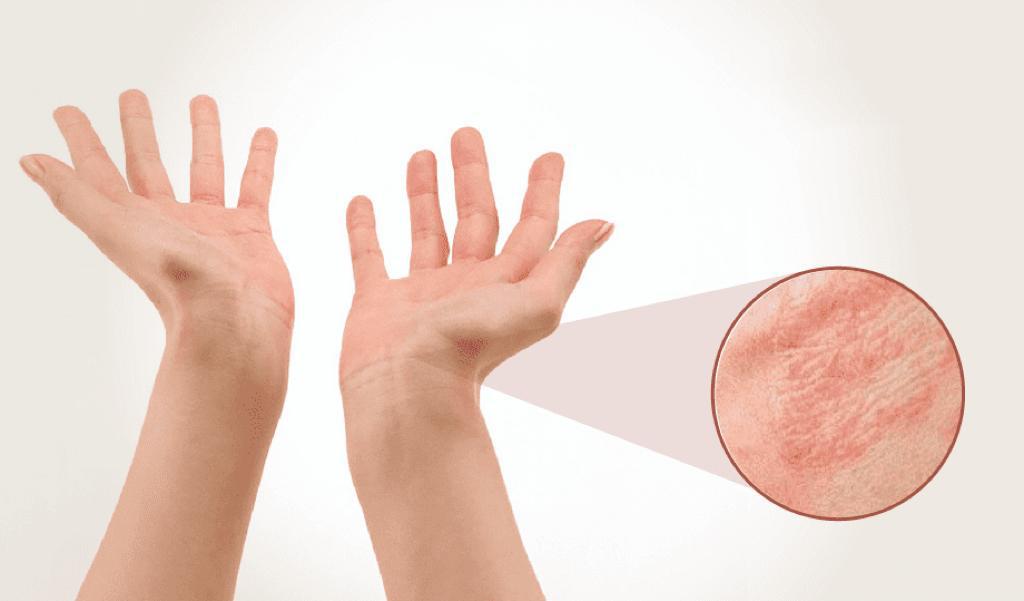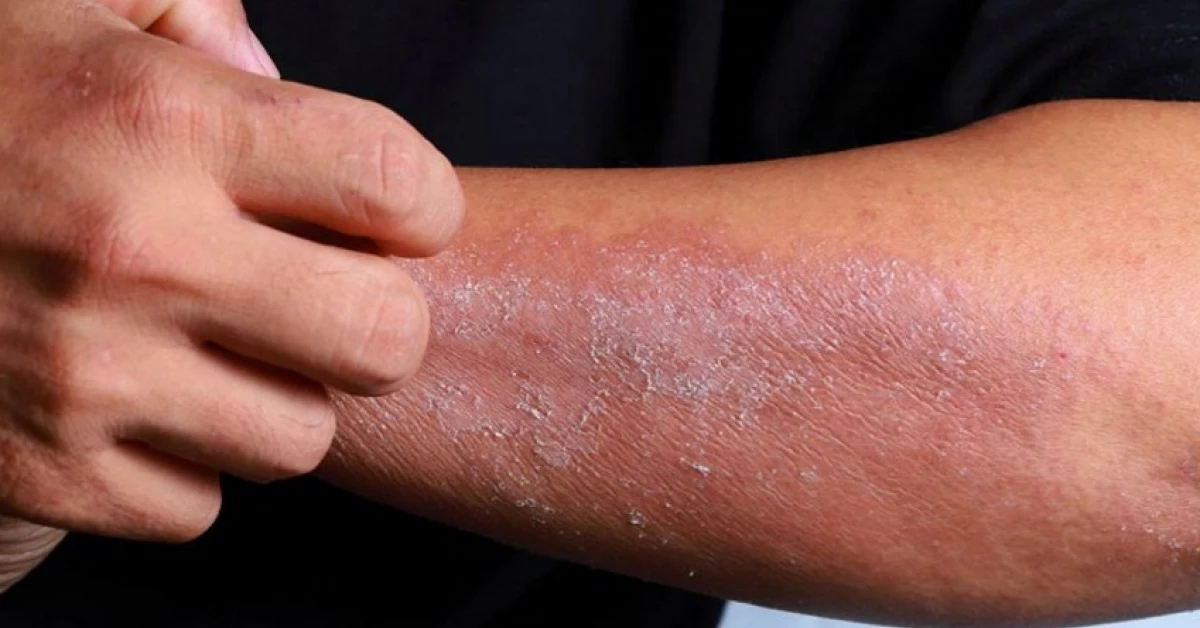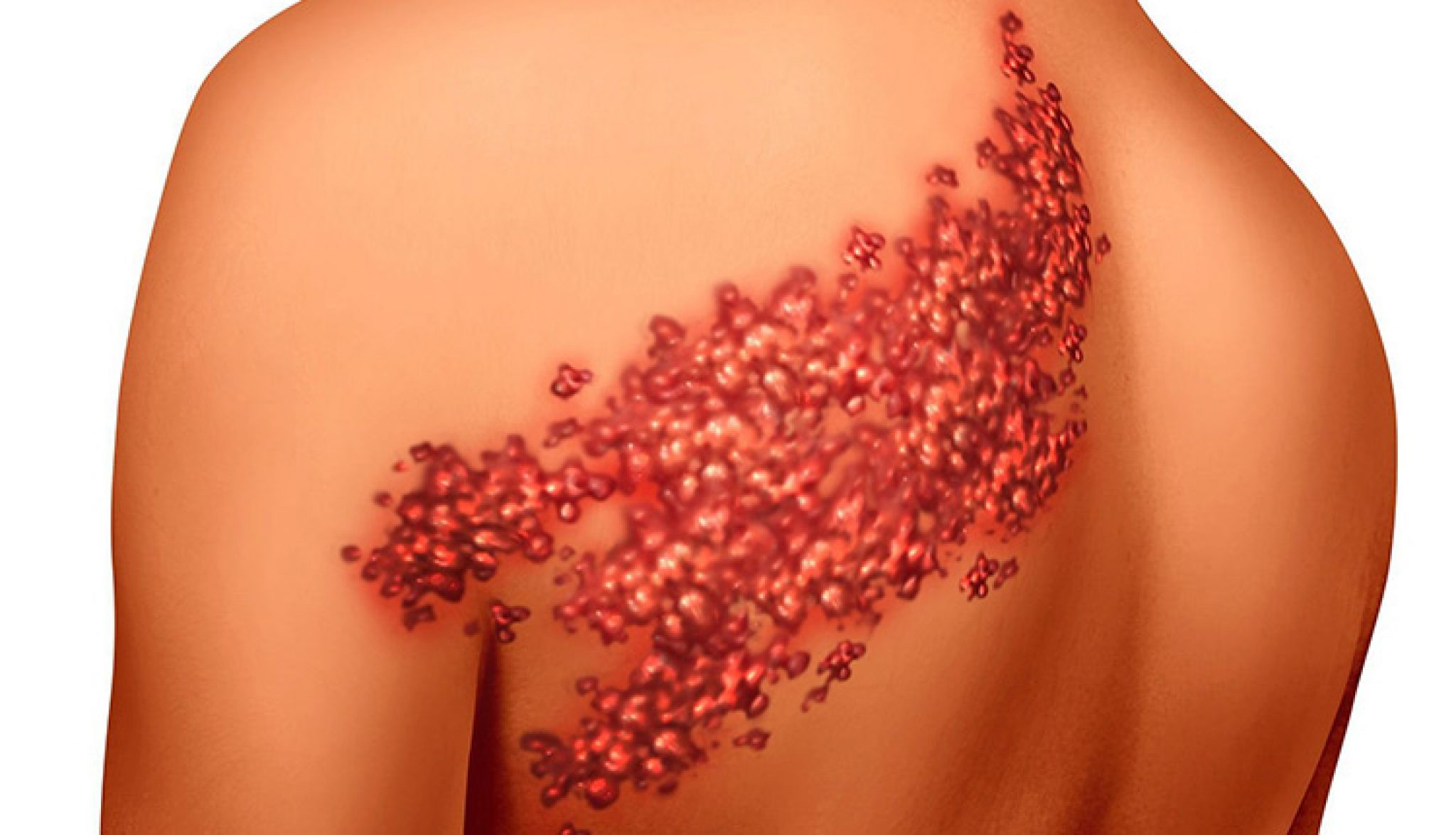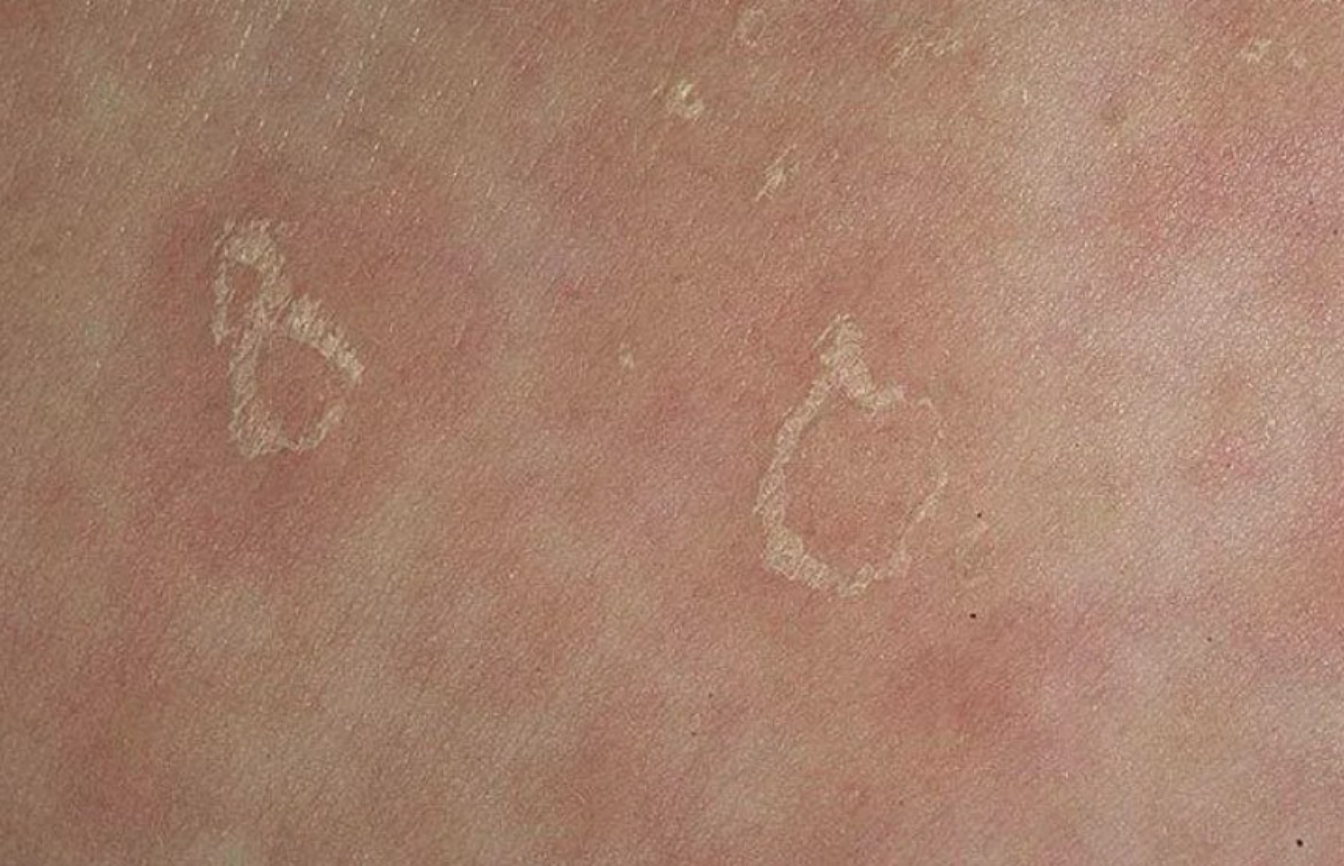Bite with a circle around it. Circular Rashes: Causes, Symptoms, and Treatments for Ring-Shaped Skin Conditions
What are the common causes of circular rashes on the skin. How can you identify different types of ring-shaped skin conditions. What are the most effective treatments for circular rashes and when should you see a doctor.
Ringworm: The Most Common Cause of Circular Rashes
Despite its name, ringworm is not caused by a worm but is actually a fungal infection of the skin. This common condition gets its name from the characteristic circular rash it produces, often with a raised, ring-like border that can resemble a worm under the skin.
Symptoms of Ringworm
The typical ringworm rash appears as a circular patch on the skin with the following features:
- Usually measures a few centimeters in diameter initially, but can grow larger if untreated
- Appears as a round, flat patch with a thin raised ring around the edge
- The center of the rash tends to clear first as it heals
- On lighter skin tones, the rash is red or pink
- On darker skin tones, it appears silver or brown
- The surrounding skin may be dry and scaly
- Often extremely itchy
Ringworm can occur anywhere on the body, though the appearance may vary slightly depending on location. For example, ringworm on the scalp, feet, hands, groin or nails may not have the classic ring shape. Common variations include athlete’s foot and jock itch.

How is Ringworm Treated?
Treatment for ringworm typically involves antifungal medications applied topically as a cream or gel. For effective treatment:
- Use the medication for 2-4 weeks, even after symptoms resolve
- Keep the affected area clean and dry
- Wash hands after touching the rash to prevent spread
Is ringworm contagious? Yes, ringworm can spread through close contact between people or from animals to humans. To reduce the risk of contracting or spreading ringworm:
- Shower after exercising
- Change clothes daily
- Avoid sharing towels or personal care items
- Seek veterinary care for pets with suspicious skin lesions
Lyme Disease: When a Tick Bite Leads to a Bull’s-Eye Rash
A circular rash appearing after a tick bite can be an early sign of Lyme disease, a bacterial infection transmitted by ticks. This distinctive rash, known as erythema migrans, is a key indicator for diagnosing and treating Lyme disease in its early stages.
Identifying the Lyme Disease Rash
The Lyme disease rash typically has these characteristics:

- Appears days to weeks after a tick bite
- Often has a distinctive “bull’s-eye” appearance
- On lighter skin, may show as three concentric circles: red, light, then red again
- On darker skin, may appear as a raised ring around the bite site
- Expands over time, often reaching several inches in diameter
- Can cause pain, burning, or itching
- May feel warm to the touch
Tick bites can occur anywhere on the body but are often found in warm, hidden areas like the lower leg, armpit, groin, or back.
Beyond the Rash: Other Lyme Disease Symptoms
Do all Lyme disease cases present with a rash? Not always. About half of people with Lyme disease experience flu-like symptoms, which may appear before the rash. These can include:
- Fever
- Chills
- Fatigue
- Body aches
- Headache
Treating Lyme Disease
Early treatment is crucial for Lyme disease. When caught in its initial stages, a course of antibiotics can effectively cure the infection. To prevent Lyme disease:
- Check for ticks after spending time outdoors
- Remove any attached ticks promptly and completely, without squeezing the body
- Seek medical attention if you develop a rash or flu-like symptoms after a tick bite
Contact Dermatitis: When Allergies Cause Circular Rashes
Contact dermatitis is an allergic skin reaction that can sometimes manifest as a circular rash. This condition occurs when the skin comes into contact with an allergen or irritant, triggering an immune response.

Recognizing Contact Dermatitis
The symptoms of contact dermatitis can vary but often include:
- Skin darkening or reddening
- Itching or dryness
- Swelling or blistering
- Rash size corresponding to the area of contact with the allergen
Why might contact dermatitis appear as a circular rash? If the object causing the reaction is round, such as a watch containing nickel for someone with a nickel allergy, the resulting rash may take on a circular shape.
Managing Contact Dermatitis
The most effective approach to treating contact dermatitis involves:
- Identifying the allergen or irritant
- Avoiding contact with the trigger
- Using products designed for sensitive skin
- Carefully checking labels on personal care products for common allergens
Over-the-counter creams can help alleviate swelling and irritation associated with contact dermatitis. For persistent or severe cases, consult a dermatologist for prescription treatments.
Hives: When Allergic Reactions Mimic Bug Bites
Hives, also known as urticaria, are another allergic reaction that can sometimes be mistaken for circular bug bites. These raised, itchy welts can be triggered by various factors, including temperature changes, certain foods, medications, and viral infections.

Characteristics of Hives
Hives typically present with the following features:
- Red or skin-colored bumps or patches
- Itching or burning sensation
- Can appear anywhere on the body
- May appear and disappear quickly
- Can be circular and resemble bug bites in some cases
Treating and Managing Hives
To address hives effectively:
- Take antihistamines to reduce swelling and prevent hives caused by allergens
- For heat-induced hives, wear loose clothing and use sunscreen
- Apply cool, damp washcloths to affected areas for relief
- Identify and avoid triggers when possible
For chronic or severe hives, consult an allergist or dermatologist for specialized treatment options.
Granuloma Annulare: A Rare Cause of Ring-Shaped Rashes
Granuloma annulare is an uncommon skin condition that causes bumps to form in a circular or ring-shaped pattern. While the exact cause is unknown, it’s believed to be related to the immune system.
Identifying Granuloma Annulare
Key features of granuloma annulare include:

- Circular or ring-shaped rash composed of small bumps
- Most commonly appears on hands, arms, or feet
- Can occasionally spread across the body
- Smaller patches may join to form larger ones
- Usually asymptomatic, but may cause mild itching
Treatment Options for Granuloma Annulare
Many cases of granuloma annulare resolve on their own without treatment. However, for persistent or widespread cases, treatment options may include:
- Topical corticosteroids to reduce inflammation
- Cryotherapy (freezing) of individual lesions
- Phototherapy for widespread cases
- Oral medications for severe or resistant cases
Consult a dermatologist for proper diagnosis and treatment recommendations, as granuloma annulare can sometimes be mistaken for other skin conditions.
When to Seek Medical Attention for a Circular Rash
While many circular rashes are harmless and resolve on their own, certain situations warrant professional medical evaluation. Seek medical attention if you experience:
- A rapidly expanding rash, especially if accompanied by fever or other systemic symptoms
- A bull’s-eye rash following a tick bite, which could indicate Lyme disease
- Persistent rashes that don’t respond to over-the-counter treatments
- Rashes accompanied by severe itching, pain, or signs of infection
- Any rash that significantly impacts your quality of life
A healthcare provider can accurately diagnose the cause of your circular rash and recommend appropriate treatment options.

Preventing and Managing Circular Rashes: Best Practices
While not all circular rashes are preventable, there are steps you can take to reduce your risk and manage symptoms effectively:
General Prevention Tips
- Practice good hygiene, including regular handwashing and showering after exercise
- Keep skin clean and dry, especially in warm, humid conditions
- Avoid sharing personal items like towels, combs, or clothing
- Use protective gear when engaging in outdoor activities in tick-prone areas
- Be aware of common allergens and irritants, and avoid known triggers
Managing Symptoms
If you develop a circular rash:
- Avoid scratching, which can lead to infection or scarring
- Apply cool compresses to relieve itching and discomfort
- Use over-the-counter antifungal or anti-itch creams as appropriate
- Keep the affected area clean and dry
- Follow any treatment plans prescribed by your healthcare provider
By understanding the various causes of circular rashes and taking appropriate preventive measures, you can better protect your skin health and know when to seek professional care. Remember, while many circular rashes are benign, some can indicate more serious underlying conditions. When in doubt, consult a healthcare professional for accurate diagnosis and treatment.

Circular rash: Causes and diagnosis
The most common cause of a circular rash on the skin is ringworm, but other issues — such as Lyme disease and granuloma annulare — can also leave this distinctive mark.
A doctor diagnoses the cause of a rash after examining it and asking about symptoms. They may recommend oral medication, a topical cream, or strategies for avoiding triggers.
In this article, learn more about the issues that can cause this rash and how to treat them.
Despite its name, ringworm is a fungal skin infection — it is not caused by a worm or any other parasite.
The infection got its name because it causes a rash that is usually circular, with a thin raised ring around the edge that may look like a worm.
Symptoms
The circular rash may initially measure a few centimeters across, and it can grow without treatment. It may look like a round, flat patch, and the middle of the rash tends to heal first.
On lighter skin, a ringworm rash is red or pink, and on darker skin, it is silver or brown.
The skin around the rash may be dry or scaly, and the rash can be extremely itchy.
Ringworm can appear on any part of the body, and the rash may not be ring-shaped if it appears on the scalp, soles of the feet, palms, groin, or nails. Athlete’s foot and jock itch are types of ringworm.
Ringworm is infectious and can pass from one person to another through close contact.
How long is ringworm contagious for? Find out here.
Treatment
Treatment involves antifungal cream or gel. A person should:
- Use the medication for 2–4 weeks, even after the symptoms go away.
- Keep the skin as clean and dry as possible.
- Wash the hands after touching the rash to keep it from spreading to other parts of the body.
The risk of developing ringworm is higher in warm, humid weather. To reduce the chances:
- Always shower after exercise.
- Change clothes daily.
- Do not share towels or brushes.
- Take any pet that develops bare patches of fur or other ringworm symptoms to the vet.

Learn about home remedies for ringworm here.
After a tick bite, a circular rash may develop at the site. This is an early symptom of Lyme disease.
Symptoms
The circular rash can appear days or weeks after the bite, and it may have a distinctive bull’s eye appearance.
On lighter skin, a person may see three circles surrounding the bite: a red circle closest to the bite, then a lighter ring, then another red ring. On darker skin, the appearance can be different — check for a raised ring around the bite.
The rash usually expands over time. It can cause pain, burning, or itching, and it may be warm to the touch.
A tick may bite any part of the body, and it may favor exposed or warm areas. These bites are common in the lower leg, armpit, groin, and back.
About half of the people who contract Lyme disease have flu symptoms, which usually appear before the rash.
Treatment
Receiving treatment early on is crucial. At an initial stage, a course of antibiotics can cure Lyme disease.
Check the skin for tick bites after being outdoors. Remove a tick right away, without squeezing it, and be sure to remove the tick entirely.
Learn more about the Lyme disease rash here.
Contact dermatitis is an allergic skin reaction.
Symptoms
The skin will darken or redden and may feel itchy or dry. Contact dermatitis can also cause the skin to swell or blister.
The size of the rash depends on how much skin has come into contact with the allergen.
The rash may be circular if the object triggering the reaction is round. For example, if a person has a nickel allergy, wearing a nickel watch may cause a round rash to form on the wrist.
Treatment
The most effective way to combat contact dermatitis is to identify and avoid contact with the allergen or irritant.
It can help to use products designed for sensitive skin and to check labels of soaps and personal care products carefully for common allergens and irritants.
Over-the-counter creams can help reduce swelling and irritation.
Learn more about contact dermatitis here.
Hives are a reaction to temperature, food, medication, viral infections, and other triggers.
Symptoms
Hives form when the skin swells into welts. These are red or skin-colored bumps or patches that may itch or burn.
Hives can develop on any part of the body, and they may appear and disappear quickly. In some people, hives or patches of hives may be circular and resemble bug bites.
Treatment
Antihistamines can reduce swelling and prevent hives if they result from contact with an allergen.
If hot weather is a trigger for hives, wear loose clothing, and use sunscreen. Also, it may help to dampen the skin with a wet washcloth.
Learn more treatments for hives here.
Granuloma annulare is rare. It causes bumps to form a circular or ring-shaped rash.
The rash most often appears on the hands, arms, or feet. Less commonly, it can spread across the body, or smaller patches can join to form larger ones.
Symptoms
The causes are still unclear, but granuloma annulare can develop after skin damage or a viral infection.
Granuloma annulare causes no symptoms beyond the rash, and it is not contagious.
Treatment
The condition usually disappears without treatment, but it can last for years. Steroid injections or creams may help the body heal.
If any circular rash lasts for a long time, causes significant discomfort, or affects the face or throat, a person should see a doctor.
If ringworm doesn’t go away after 2 weeks of treatment, see a doctor.
If it affects the scalp, however, it is a good idea to consult a doctor or pharmacist right away. Also, anyone who has a weakened immune system should see a doctor if they have ringworm.
If an allergic reaction is severe or the cause is unclear, seek professional guidance.
Always see a doctor about a tick bite, unless the tick was safely removed within 36 hours of the bite.
Seek urgent medical care if a rash:
- covers the entire body
- occurs with a fever
- is painful
- begins to blister
- occurs with difficulty breathing
A doctor, such as a dermatologist, will consider accompanying symptoms and any contact with allergens or irritants when diagnosing a circular rash.
Allergists can test for triggers of skin reactions, which are often pet hair or medication.
They may test the skin, blood, or urine, but they commonly perform patch tests. This involves placing strips containing small amounts of allergens on the back. The doctor then removes the strips after 48 hours to check for an allergic reaction.
Keeping track of foods, drinks, medications, physical activities, and symptoms in a diary can help a person identify what might be triggering a reaction.
The size and shape of a circular rash and the symptoms it accompanies can each point to the cause.
A person can treat mild cases of ringworm, hives, and contact dermatitis with home care and over-the-counter products. However, if a circular rash is severe or may result from a tick bite, see a doctor.
It is also important for a person to receive professional care if they have had an allergic reaction without an obvious cause.
Anyone with a persistent rash or other skin problems may benefit from seeing a dermatologist.
Tick Bites – Identification, Signs and More
If you have a tick bite, you need to identify the offender fast, remove the culprit from your skin, and try to preserve it for species identification by a professional. Taking these steps helps with tick-borne disease prevention and if necessary, treatment. Unfortunately, things don’t always go according to plan and bites aren’t always easy to identify and the origin of a bite isn’t always easy to determine.
From tips for removing a tick to photos of what a tick bite might look like, here’s what you need to know about tick bites to help keep you, your family and your pets safe this tick season.
What does a tick bite look like?
If a person or an animal has been bitten by a tick, one of the key signs of a tick bite is actually seeing the tick itself still stuck to the skin. Ticks require a blood meal from a human or animal host in order to grow. While ticks can embed their mouth parts in a host to feed, sometimes, a tick can be dislodged without a person even knowing they’d been bitten in the first place.
If you’ve recently been bitten by a tick, it can initially look like most other tiny insect bites. Tick bites may have either a small black dot in the middle or a hardened bump (similar to a mosquito bite) at the site of the bite itself.
One of the signs that you may have been bitten by a tick that can cause Lyme disease occurs within three days of having been bitten, taking the form of a dime-sized red spot. This spot expands outward within 36 hours, forming a bulls-eye pattern. This is due to an allergic reaction to tick saliva and may indicate that a person has been exposed to the organism that causes Lyme disease. It’s important to seek immediate care from a medical professional if you see a bulls-eye pattern on the skin that has expanded in radius over the course of several days.
What are the signs and symptoms of tick bites on humans?
Some of the warning signs that you’ve been bitten by a tick may include:
- A small black dot at the site of the bite.

- A small red bump with a hardened center.
- A bulls-eye rash. particularly a rash that feels warm at the site and expands over the course of three to 30 days following a tick bite. According to the Mayo Clinic, it’s important to note that if a tick-related rash that expands or forms a bulls-eye pattern that grows to 12 inches in diameter over that period of time, that tick may have been infected with Lyme disease. Please seek medical attention immediately if this is the case.
- Fever, body and joint aches, swollen lymph nodes, and lethargy may also be present alongside a rash following a tick bite.
Signs and symptoms of tick bites on pets
While it may be easier to see a rash or confirm symptoms on a human host that has been bitten by a tick, it may be more difficult to spot signs of a tick bite on a pet. Often, unless you actually see a tick attached to your pet while brushing or grooming them, you may be unaware of them having been bitten until weeks or months later.
Dogs, in particular, that spend time outdoors can be vulnerable to tick bites. According to the American Kennel Club Canine Health Foundation (AKCCHF), thousands of dogs are infected each year with a variety of serious illnesses as a result of tick bites.
Some of the signs and symptoms of tick bites on pets you should be aware of include skin lesions, joint stiffness and high fever. These may be indicators of Lyme disease or one of many other tick-borne diseases following a tick bite. Instances of Lyme disease in cats is quite rare, however, it’s more common in dogs. In addition to the previously mentioned symptoms, you may also see your dog limping as if in pain, as well as vomiting, loss of appetite and weight loss.
How to remove a tick
Ticks are parasitic pests that will attach themselves to a food source, seeking out a blood meal. Whether you spot a tick on a human or an animal companion, the steps to safely remove a tick remain the same. According to the CDC:
- Get a firm grip on the tick using a pair of tweezers.
 Try to grab onto the tick with the tweezers as close as possible to the skin.
Try to grab onto the tick with the tweezers as close as possible to the skin. - Use a firm, yet steady hand to pull the tick up and away from the skin using slow, even pressure. Do not jerk the tweezers or the tick, as this can cause the tick’s mouth parts to break off and become lodged under the skin.
- In the event that a tick’s mouth parts do break off beneath the skin, try to remove them. If you cannot easily remove with tweezers, it’s okay to allow those parts to stay beneath the skin. They can eventually work their way out and allow the skin to fully heal.
- Once the tick has been removed, wash your hands with soap and water and clean the area with rubbing alcohol (or soap and water if unavailable).
- Following removal of a tick, it’s important to dispose of it properly if you don’t want to preserve it for a medical professional. To do so, the tick can be dropped in alcohol, flushed down the toilet or wrapped in tape.
- In the event that you may want to take the tick to a medical professional for evaluation to see if it carries Lyme disease, the Cleveland Clinic advises that you place the tick in a tightly sealed bag or container .
 Do not try to mash the tick with your fingers.
Do not try to mash the tick with your fingers.
Contrary to popular belief, you should never use a lit match to “burn” the tick off of the skin, or use other substances (such as nail polish, turpentine, or petroleum jelly) to coat the tick in order to remove it. These methods are ineffective and can even increase the chance of infection.
How do ticks get on you?
Ticks can bite you anywhere on your body, but they really love moist, warm places. Ticks will often latch onto your socks or shoes, then make their way up to your groin area. If your sleeve or arm brushes up against some tick-infested grass, they may make their way up to your armpit instead.
Where should you look for tick bites?
Always check the areas mentioned above first, then check the rest of your body. Pay particular attention to any areas that have hair, especially on your head and face. It’s easy for ticks to hide in hair. On both humans and pets, ticks love to attach behind and around the ears. At the nymph and larval stages, ticks will attach to the backs of pets, while at the adult stage, they tend to feed around the paws and between the toes of dogs and cats. Tick bites on humans can occur all over your body, no matter the life cycle stage, so enlist the help of a loved one to perform a thorough search of your body. Look or feel for new bumps on your skin.
At the nymph and larval stages, ticks will attach to the backs of pets, while at the adult stage, they tend to feed around the paws and between the toes of dogs and cats. Tick bites on humans can occur all over your body, no matter the life cycle stage, so enlist the help of a loved one to perform a thorough search of your body. Look or feel for new bumps on your skin.
How do I identify a tick bite?
Being bitten by a tick is never a good thing, but in the best case scenario, you’ll know that you have a tick bite by the tick literally being attached to your body. Ticks take a long time to fully engorge themselves (how long depends on the size and life stage of the tick).
If you’re practicing the recommended frequent tick checks after coming in from outdoors, chances are you’ll find the tick bite while it’s still attached. This is highly beneficial since ticks take at least 12 hours of feeding to transmit most tick-borne diseases. Plus, if you find the tick attached, you can remove and save it so your doctor can identify the type of tick that bit you. This is vital for monitoring and treating any diseases it might carry.
This is vital for monitoring and treating any diseases it might carry.
What do tick bites on humans look like if the tick isn’t present?
If the tick was removed without you knowing it (e.g., in the shower, through physical impact, random scratching or the tick is simply done feeding), you might be left with just a bite mark as evidence. Within three days of a tick bite, the most common identifying mark is a dime-sized red spot. This is caused by an allergic reaction to the tick’s saliva. This reaction can be worse if you’ve previously been bitten by the same species of tick. A tick bite mark can start off looking like any number of insect bites (even a mosquito bite, despite the fact that ticks are arachnids), so it’s important to monitor any suspicious marks you may have.
How to monitor a tick bite
- Draw a circle around the site of the bite with a pen and if in 36 hours the bite expands its reddened, raised appearance, seek medical attention as this could be a sign of Lyme disease.

- Tick bites may have a black dot in the middle of them, or if the body was removed and the head and mouthparts remained in your skin, you might see a larger black mark (or even pincers).
- Some bites from ticks will have a hardened bump underneath the site of the puncture.
What is the tick bull’s-eye bite?
Ticks carry many pathogens that may cause diseases, most notably Lyme disease. One of the telltale signs that you might be infected is if the bite expands, with another red circle appearing around the original site of the bite. This gives the bite the appearance of a red bull’s-eye, though this doesn’t have to be present in order for Lyme disease to occur.
What do I do if I develop a bull’s-eye rash?
Seek immediate medical attention if you develop a bull’s-eye around your tick bite.
How do you prevent ticks from getting on you?
In addition to taking precautions when you go outdoors, call Terminix® today and find out how to help protect your family and your pets from tick bites.
Tick Bite Resource
- Ticks and Tick-Borne Disease in the United States
- Ticks and Lyme Disease
- What Does A Tick Bite Look Like?
The whole truth about sheep: they are neither stupid nor defenseless
- Harriet Constable
- BBC Earth
Subscribe to our newsletter ”Context”: it will help you understand the events.
Copyright © iStock
Sheep are one of the few animal species that have been stereotyped as extremely unfair. Almost everything we think about them is not true.
What do we think of them: Sheep are stupid, defenseless and harmless creatures that wander aimlessly through meadows and hills. All they need is thick wool and edible meat.
Actually: In fact, sheep are surprisingly smart, they have a good memory, and their cognitive abilities (the ability to perceive information and process it) are quite developed. They know how to be friends, stand up for each other and are sad when their partner is sent to the slaughterhouse. And in destructive for nature skills few can compete with them.
They know how to be friends, stand up for each other and are sad when their partner is sent to the slaughterhouse. And in destructive for nature skills few can compete with them.
Image copyright, iStock
Image caption
Man has been raising sheep for millennia
Smart. Complex. They love company. But not people. Is it really about sheep, which, if they are good for anything, are for barbecue? And their wool is also good … But intelligence ?!
We are accustomed to consider a sheep ( Ovis aries ) impenetrably stupid. This opinion has not changed much since the 18th century, when one of the founding fathers of the United States of America, George Washington, proclaimed: “If freedom of speech is taken away, then we, submissive and quiet, can be led to the slaughter like sheep.”
Nowadays, a sheep is called one who mindlessly and submissively follows others. “Don’t be a sheep!” – so they say when they call on a person to think with his own head and not obey someone else’s will.
However, the truth is that sheep are much smarter than people think.
Image copyright, iStock
Image caption,
The environmental impact of sheep is significant, to say the least
In a 2001 study, Keith Kendrick found that these modest-looking animals can remember and then recognize at least 50 human faces per day. over the next two years or more. An unattainable result even for some people.
“Sheep clearly showed signs of recognizing individuals when they were shown painted faces,” says Kendrick.
Scientists have also found evidence that sheep understand human facial expressions and prefer a smile.
In an interview with the BBC, Kendrick said: “The way sheep’s brains are organized suggests that these animals must respond emotionally to what they see around them.”
Caroline Lee of the Australian National Association for Scientific and Applied Research has also studied sheep for intelligence.
She found that sheep can learn to find their way through a complex maze. The sight of other familiar sheep waiting at the exit of the maze helped the experimental animal reach the result faster.
Sheep are not only smart, but also playful; in general, this is a rather positive, cheerful animal. Just watch this video to be sure.
In addition, sheep have different sexual habits – 8% of them prefer same-sex relationships. This is one of the few animals that remain faithful to their homosexual choice throughout their lives.
Image copyright, iStock
Image caption,
Man needs meat and wool from a sheep. What does a sheep need from a human?
Sheep have complex relationships within the herd. Approximately two decades ago, researchers at the University of California observed sheep for three years and came to the conclusion that they can be bound by bonds of strong friendship. They help each other in difficult situations – stand up for the weak and, if necessary, fight shoulder to shoulder with enemies.
The manifestations of friendship and fidelity in sheep and rams are emotionally colored. Study 2009year, the results of which were published in the international journal Animal Welfare , showed that sheep are able to experience a whole range of feelings – from fear to anger, from despair to happiness.
“[Like humans], feelings of desperation arose in situations that could be described as sudden, unfamiliar, unpredictable … and uncontrollable, while familiar, predictable surroundings caused boredom,” the authors write.
Image copyright, iStock
Image caption,
Mouflon, the closest relative of the domestic sheep in the wild
The irony is that sheep have been living next to and with humans for so long, and we know so little about them.
These animals were domesticated between 11000 and 9000 BC. – because of thick wool, meat and milk. Sheep are mentioned in countless books, religious texts, and even astrology.
Say, the astrological sign Aries is nothing but a ram (however, if a woman was born under this sign, then it is a sheep). In the ancient Egyptian religion, the ram symbolized several gods at once.
The expression from the New Testament “to separate the lambs from the goats” (Gospel according to Matthew) allegorically means “to separate the good from the bad”, the righteous from the sinners. So the sheep here symbolize goodness.
- The whole truth about chickens: they are not stupid at all
- The whole truth about cockroaches: they have their own mission on Earth
It is believed that in the wild the closest relative of domestic sheep is the mouflon, from which it originates.
Wild mouflons were found in large numbers in ancient Mesopotamia (covering what is now the Middle East at that time, including Iraq, Kuwait, eastern Syria and southeastern Turkey).
They had powerful horns, with which they successfully defended themselves from predators, but then people made sure that the sheep did not have such horns, but had constantly growing thick wool.
Image copyright, iStock
Image caption,
There’s intelligence in those eyes…
But despite human efforts, today’s sheep are still capable of something.
Firstly, they can give a good kick if you gape and get too close to them. Especially often a sheep does this to protect its young.
Despite their peaceful and calm appearance, sheep run fast and can climb steep slopes in ways that many predators never dreamed of.
- The whole truth about pigs: we made them that way
- The whole truth about beavers: they were once gigantic
- The whole truth about rabbits: do they breed like rabbits?
And to top it all off, sheep have excellent peripheral vision: they have horizontal slit-like pupils that allow them to see almost what is happening behind their backs without turning their heads.
It is clear that none of these worthy qualities will save a sheep if a person wants to put it under the knife.
People love the meat and wool of this animal so much that there are now about 1.2 billion sheep on our planet.
200 million of them live in China, more than 70 million in Australia, more than 60 million in India, 45 million in Iran, 41 million in Nigeria, about 40 million in Sudan.
Great Britain has a total sheep herd of 33 million heads, and New Zealand – almost 30 million.
In Kenya, where there are approximately 17 million sheep (which are raised for meat), these animals are a disaster for wildlife.
Image copyright, iStock
Image caption,
Dall sheep (wild sheep)
A study published in September 2016 showed that the population of all wild animals in Kenya declined by 68% between 1977 and 2016. Those affected include warthogs, many species of antelope and the rare Grevy’s zebra (desert zebra). During the same period, the number of sheep increased by 76.3%.
During the same period, the number of sheep increased by 76.3%.
“Aerial observations by the Kenyan authorities have shown that the number of sheep has increased dramatically over the past 40 years,” says co-lead author Joseph Ogutu of the University of Hohenheim in Stuttgart, Germany.
“Sheep bite grass very low to the ground, and when there are a lot of them, they simply destroy pastures. This is terrible because most wild animals [such as elephants, buffaloes and zebras] need taller grass to eat.”
In the Masai Mara in 1992, according to Ogutu, the number of buffalo was approaching 13,000, but has since declined sharply.
- The Truth About Vampire Bats
- The Truth About Polar Bears
- The Truth About Ladybugs
- The Truth About Giant Pandas
“During a drought, they had to leave from their pastures, driven out by sheep and other livestock, the result was a 76% decline in the buffalo population in just one year and has not recovered since. ”
”
Droughts have been quite common in Kenya before, but now that there are so many sheep, the consequences for animals competing for the same resources, both domestic and wild, are severe, says Ogutu. He and his colleagues are calling on the Kenyan government to limit the number of sheep and other livestock.
Image copyright, iStock
Image caption,
A sheep turned into a destructive animal
But what’s happening in Kenya is only part of the global story. Demand for livestock products around the world is still growing, and the pressure on the environment in this regard is increasing, noted in a 2006 report by the Food and Agriculture Organization of the United Nations (FAO) in 2006.
There are so many sheep on our planet that they have turned into an animal that destroys nature.
Raising sheep in such numbers, people are making a significant contribution to the process of deforestation and climate change, resulting in a shortage of drinking water.
Of course, this is not the fault of the sheep themselves. But when you know all these facts, the sheep no longer seems innocent or stupid.
Read the original of this article in English can be found on the site BBC Earth .
38 days on a boat in the ocean with the whole family: what helped to survive after a shipwreck
- William Park
- BBC Future
9 0008 Subscribe to our ”Context” newsletter: it will help you understand the events .
Image copyright, Getty Images
The Robertson story is not only an example of how much a person can endure, but also an object lesson in practical survival techniques. This family drifted in the open ocean for 38 days after their small yacht was capsized and sunk by a killer whale. How did they manage to survive with almost no drinking water and food supplies?
The wind had died down the day before, but the sea was still rough, quite strong for the little Lucette. The waves were such that they could well turn over this yacht, on board of which the Robertson family decided to make a trip around the world.
The waves were such that they could well turn over this yacht, on board of which the Robertson family decided to make a trip around the world.
They were 200 km from the Galapagos Islands and headed for the Marquesas Islands in French Polynesia. The journey was supposed to take 40 days. Two days have already passed.
When something dark appeared on the horizon among the waves approaching the yacht, part of the family members were sleeping on the lower deck after the night watch. Morning coffee was brewed on the stove, an ordinary day at sea began.
What happened in the next few seconds changed their lives forever.
Douglas Robertson was 18 at the time. He was in the cockpit with his younger brother Sandy when he spotted the orca’s triangular fin.
- Tsunami survivors: “I closed my eyes, prayed and prepared to die”
- Water, light and don’t panic.
 Survival lessons in a flooded cave
Survival lessons in a flooded cave - Four days of unbearable horror: the story of the rescue of a tourist in the desert
- Last chance to see the Titanic at the bottom of the ocean?
“I pulled the line towards me and saw that I had a huge squid on the hook, and I told my brother: it seems that there is a big fish somewhere nearby. Because where there are squids, there are whales,” he recalls.
And then the blows followed – three in a row. And a wooden schooner 13 meters long literally flew into the air, all the people fell. The sound of breaking wood was so terrible that it could only be the keel.
“I thought at the time that we must have been flipped 360 degrees,” says Douglas, now 65. “Because somehow we were back on the boat and not in the water—I can’t think of any other explanation. I remember looking in the hatch and asking, “Dad, how are you?” And he already had water up to his ankles there. ”
”
Meanwhile, one of the killer whales, the largest of the three, was bleeding from a head wound. But what made the animals attack the yacht?
Photo copyright Javier Hirschfeld
Photo caption
Douglas Robertson, now 65, experienced the thrill of a small yacht colliding with a killer whale
Skip the Podcast and continue reading.
Podcast
What was that?
We quickly, simply and clearly explain what happened, why it’s important and what’s next.
episodes
End of Story Podcast
Whales sometimes attack boats, but this is very rare. The famous scene from “Moby Dick” is based on the true events of 1820, when a sperm whale rammed and sank the 26-meter whaling ship “Essex” in the South Pacific.
Initially, all 20 members of the crew survived, but only eight survived and made it to the USA, having managed to endure the difficult journey, during which they had to resort to cannibalism.
Sperm Whales fight with each other, striking with a huge, strong head, like a battering ram. Perhaps, in the case of the Essex, the sperm whale simply made a mistake, mistaking the ship for another sperm whale.
However, it is most likely that the collision was accidental. Whaling ships usually swim up to the sperm whales intentionally close, then launching boats with whalers, from which they shoot from a harpoon gun. And random collisions are not unusual.
Killer whales can also fight with each other, but they usually hunt in packs, like sharks, attacking large prey from below. The little Lucette might well have looked like a whale from below.
Abandoned Lucette
Immediately after the collision, Dougal, Douglas’s father, an experienced sailor, ordered the family to leave the damaged yacht.
He turned on the radio to send an SOS signal. His wife Lin began to collect all the food supplies that were. “I looked at all this and thought: I must be dreaming about this,” Douglas recalls.
“I looked at all this and thought: I must be dreaming about this,” Douglas recalls.
The radio took a couple of minutes to warm up. But the Lucette sank earlier.
The family moved to an inflatable life raft, to which they tied a wooden boat with supplies.
“I kept thinking, this is how I’m going to die. I’m going to be eaten by those damn killer whales,” says Robertson.
“And I kept touching my legs to make sure they were in place, because I heard that the bite [of a shark or killer whale] is not felt – it just leaves you without legs. I kept touching them and thought: at least I still have legs.”
When the yacht began to sink, Robin Williams, a young man whom the family had taken with them, offering a place on board in exchange for his work, was sleeping after the night’s watch.
With difficulty coming to his senses and having little understanding of what was going on around him, he boarded the raft. One part of the raft sank into the water, and then the whole raft sank below the surface of the water. It became impossible to be on it.
One part of the raft sank into the water, and then the whole raft sank below the surface of the water. It became impossible to be on it.
Image copyright, Getty Images
Image caption,
The killer whale that collided with the Robertsons’ yacht appears to have done so by accident or mistook it for a whale
Seven people (Douglas, his parents, two twin brothers, a sister and Williams) there was no other choice but to squeeze into a boat designed for six people.
Survival Hierarchy
The Robertsons needed a plan of action.
“Survival time is measured in minutes without air, hours in cold temperatures, days without fluids, and weeks without food,” says Mike Tipton, a physiologist at the University of Portsmouth, England who specializes in extreme conditions.
The Robertsons were lucky: they were shipwrecked in the tropics, where the water temperature is far from what makes people pant and suffocate.
“All the famous stories of long-term survival happened in the tropics,” notes Tipton. “If you’re in trouble elsewhere in the world, you won’t be able to write a book about how you escaped.”
So, the first two conditions were met. However, the tropics brought with them a problem. The heat makes you sweat.
Photo copyright, Javier Hirschfeld
Photo caption,
The seven people from the Lucette were forced to take up residence in a lifeboat designed for six
“Successful survival is all about balance: fluid balance, temperature and energy balance,” says Tipton. You can minimize your fluid needs by doing everything during the coolest part of the day and avoid sweating.”
But when you are surrounded by water on all sides, it is very tempting to take a dip to cool off. As Tipton cautions, this should never be done: your skin will quickly become covered with a salt crust, which will take moisture and irritate the skin.
However, it is not forbidden to dip your hand into the water – it may even be very effective.
“When it’s hot, blood flow is very high,” explains Tipton. “And the palm is a relatively small part of the surface of the body. When the body’s core temperature rises, the body continues to send blood to the hands, and some of the heat can be released through them, cooling them down.”
So, once in a boat at the mercy of the high seas, the Robertsons, however, were alive and well, and they had time to recover and make a rescue plan.
They decided to head north, closer to the equator, to the so-called equatorial calm zone, where it may be very difficult to sail due to the lack of wind, but where it is easier to survive.
The sea in this zone warms up to 35 degrees Celsius. There is almost no wind, the evaporation rises vertically, and, cooling at altitude, the moisture returns in the form of rain.
Image copyright, Getty Images
Image caption,
Rain may be unpleasant for a sailor, but for those who are trying to survive on the high seas, it is salvation
The Robertsons decided to row to the center of the Pacific Ocean, stock up on drinking water there and then – back to continental America, riding one of the currents.
They sailed along the southern equatorial current, which carried them in a westerly direction. But on the way to the equatorial calm strip, they had to meet a current in the opposite, eastern direction, which, according to the Robertsons’ calculations, could deliver them to the American continent in 72 days.
In addition, their route lay through the shipping lanes leading from America to Australia and New Zealand, which increased the chances of being picked up.
At 10 am, on the sixth day, their luck changed. Not more than three miles away, a ship appeared. Dougal launched two hand-held flares and three parachute distress rockets into the air (after which only one hand remained).
But the ship didn’t even turn towards them. “It was a very sobering moment for each of us,” Douglas recalls. “We realized that our salvation is not a priority for others.”
Image copyright, Getty Images
Image caption,
A container ship passed very close to the Robertsons, but did not respond to any distress signals
Marine storeroom
Such a long trip on the open ocean is a hard thing in itself. First, you need food.
First, you need food.
“Anyone who’s ever gone on a diet knows that you’re only hungry at first, and as time goes by, hunger goes away, especially when you’re not doing anything special,” says Tipton.
Food is low in the hierarchy of survival conditions. Without food, you can stay alive for several weeks. However, if the Robertsons planned to be on the road for 72 days, food had to be taken care of.
Fortunately, there is plenty of food in the Pacific Ocean. Especially easy to find sources of protein. The Robertsons caught flying fish and sea turtles, drying the meat to preserve it.
“By the third week, our clothes were completely rotten,” Douglas recalls.
However, protein is not exactly what our body needs when it is hungry and dehydrated.
“When proteins change their natural properties and become amino acids, your body produces by-products like ammonia and urea that need to be diluted with fluid,” explains Tipton. Without enough drinking water, protein-rich fish will eventually poison you.
Without enough drinking water, protein-rich fish will eventually poison you.
But in turtles you can find a layer of fat under the shell, which is much more useful to your body in terms of survival. It can be eaten at any time.
Douglas says the family reduced their diet to one piece of meat three times a day and to a sip of water three to four times a day.
Although they were surrounded by the ocean, the lack of water became a major problem.
Water all around
The Robertsons were smart enough to save 18 pints (10.2 liters) of drinking water in canisters. However, for a 72-day trip, this was too little.
If you deliberately deny yourself water during the day, your body switches to water saving mode.
Normally, the human body needs about 1.5 liters of fluid per day, but in a survival setting, Tipton says that can be reduced to 400 ml per day.
In the worst case, it can be reduced to 200 ml, after which the body retains the necessary functions of the kidneys, but turns off many other processes, and the blood becomes extremely thick.
Image copyright, Getty Images
Photo caption,
Sea turtles were a source of meat and fat for the Robertsons
Hot weather quickly became the Robertsons’ enemy. “When it’s hot, you lose about half a liter of fluid a day through your skin,” says Tipton.
In addition to the meager supply of water in canisters, the Robertsons had two other sources of moisture – rainwater and condensation.
They made a canopy over the boat, and the evaporating sweat and moisture from the breath of family members condensed on its inner surface. In this way, they were able to reuse body fluids.
But what anyone who hopes to survive should never do is drink sea water or urine.
“Urine is about 4% more concentrated than regular organic fluid,” explains Tipton. “So you’ll need a lot of water to dilute it. It’s not acceptable in a survival environment,”
- 10 days in the Sahara: on the blood of bats and their own urine
The Robertsons finally reached the equatorial calm zone, but the trouble was that there was no rain. They waited for three days, but rain clouds appeared on the horizon and disappeared.
They waited for three days, but rain clouds appeared on the horizon and disappeared.
They found a way out by drinking the blood of sea turtles. According to Douglas, it tasted quite acceptable and not at all salty.
But a long period without enough water still affected their body. Douglas recalls that he only peed once during this ordeal, and the urine was thick and dark as pitch.
When the body is deprived of water, strange things happen to it. For example, by accidentally cutting their hand, family members found that the wound did not bleed.
“Our bodies are very good at adapting to extreme environments to keep our heart, lungs and brain working properly,” Tipton explains.
“If you’re dehydrated, the body reduces the peripheral blood supply to maintain central blood pressure. Their wounds didn’t bleed because there was no blood, indicating how extreme the conditions were.”
In the heat, by not sending blood to the skin, the body tries to cool itself.
Image copyright, Getty Images
Image caption,
Surrounded by the ocean, the Robertsons waited for rain to bring drinkable water. To make the body work, she suggested making enemas from dirty water collected at the bottom of the boat.
This dirty water, a mixture of turtle blood, rain and sea water, was still not drinkable. But even in the intestines it was very little absorbed. So this technique of replenishing the lack of fluid did not work.
British SAS members are said to be taught to give themselves enemas as part of a survival technique.
It is said that survivalists such as Bear Grylls (British traveller, TV presenter and writer, known from the TV program Survive at all costs. – Translator’s note ) also resorted to this method.
When I asked Tipton about this, he burst out laughing. “I have no doubt that they have tried, they will try anything. But, frankly, the effect of this will be minimal. ”
”
The Robertsons also tried to drink fish spinal fluid and eat fish eyes. Douglas recalls how the eye of a fish burst in his mouth, and what a brief relief it brought. Fish eyes, by the way, could also contain a small amount of much-needed vitamin C.
On the fourth day of being in the equatorial calm zone, it finally began to rain.
Image copyright, Getty Images
Image caption,
Strange things happen when the body is deprived of water
“We were so excited that we drank the rest of the supply of water,” says Douglas. It is good that turtles provided a regular supply of meat and blood.
However, after a while the rain also became a problem. They had to constantly bail out water from the boat, working in shifts, including at night, very tired.
On about 21 days they saw the North Star in the sky. As Douglas says, then they realized that they had already traveled 420 miles.
Rescue and acclimatization
July 23, 1972, on the 38th day of their drift, they saw the second ship. Dougal lit the last rocket and held it until it burned his arm. This time the ship turned towards them.
Dougal lit the last rocket and held it until it burned his arm. This time the ship turned towards them.
“Oddly enough, we were first asked if we wanted to be rescued,” says Robertson.
The family was picked up by a Japanese trawler. “They dropped the rope and it fell onto the raft. Only then did we realize that we were saved.”
The first thing Douglas asked for was coffee. “It was a fantastic idea.” But he couldn’t drink it.
“We were in a terrible state. We didn’t know it, but our hemoglobin levels were very low. We should have had a blood transfusion, but they put us on a coconut water diet.”
Image copyright Javier Hirschfeld
Image caption
Like his father, Douglas Robertson went on to write a book about everything that happened to his family in the ocean
survival in extreme conditions.
Just two examples: 12 Thai boys who spent 18 days in a flooded cave (2018) and 33 Chilean miners rescued after two months underground (2010). All survived.
All survived.
“When they came to the surface, they had to take a wide range of antibiotics,” says Tipton. “Although they were very hungry, they were not given food. Their digestive system needed to be restored.”
Pinnacle of satisfaction
The Robertsons were taken to Panama, where the British Embassy put them up in a hotel. It was there that Douglas fully enjoyed the freedom to order what you want in the hotel restaurant.
To begin with, he chose three servings of steak with eggs. “I bloated like a pig,” he recalls.
But the mere fact that you can eat whatever you want brought a feeling of great satisfaction.
“Dougal wrote in his book: we have reached the pinnacle of contentment, which we will never reach again in our lives. And it’s true, this will not happen again,” says Douglas.
“I remember we went to the market and they were selling turtle meat.



 Try to grab onto the tick with the tweezers as close as possible to the skin.
Try to grab onto the tick with the tweezers as close as possible to the skin. Do not try to mash the tick with your fingers.
Do not try to mash the tick with your fingers.
 Survival lessons in a flooded cave
Survival lessons in a flooded cave